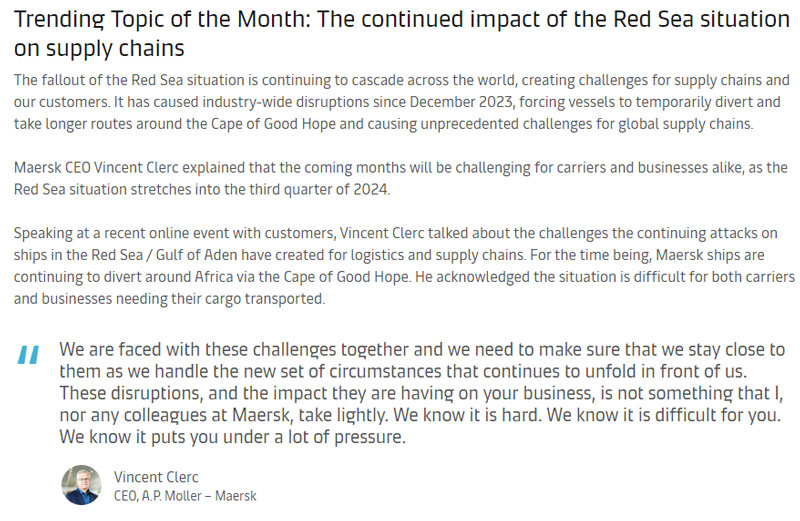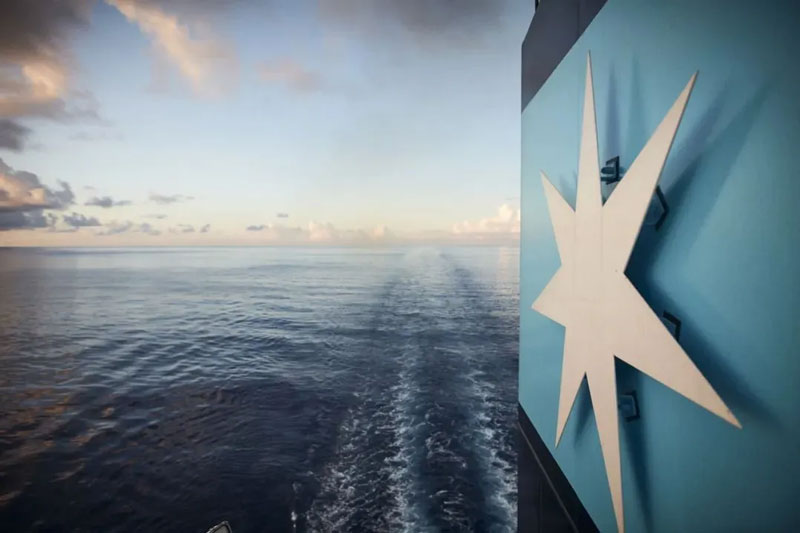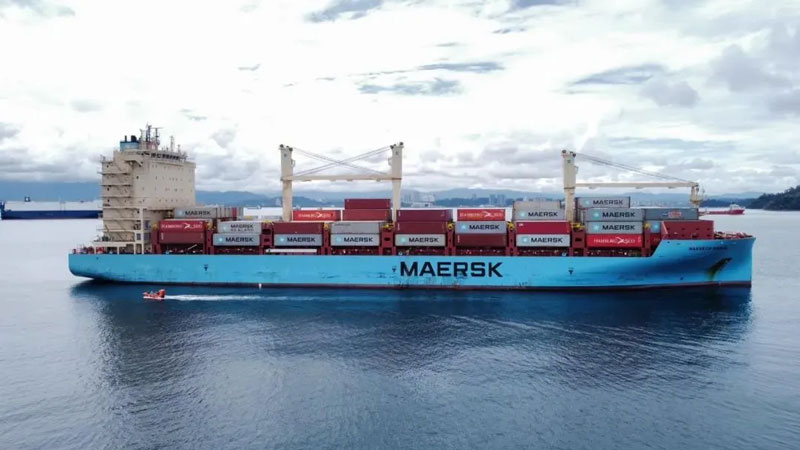

Maersk: The impact of the situation in the Red Sea is continuing to spread around the world
Recently, the shipping company Maersk said in its Asia Pacific market status update that the Red Sea crisis has spread beyond its Asia-Europe route and affected its global business.
Maersk CEO Vincent Clerc said the coming months would be challenging for both shipping carriers and customers, as the situation in the Red Sea is expected to continue until the third quarter of 2024.
He also talked about the huge impact of the situation in the Red Sea since December 2023. Extending the entire voyage and taking a longer detour to Africa would require two or three additional ships, depending on the route, he said. Initially, additional capacity across the industry was low and the ability of shipping carriers to add additional capacity was very limited. At the same time, the market demand for container transportation remains strong.
There are many reasons for the domino effect in these areas. First, congestion at major ports in Asia leads to delays and bottlenecks in port operations, which ripple through the entire shipping network. Secondly, the maritime ship transport network has been re-optimized, and the relevant vessels have been re-scheduled to better meet the market demand for capacity. This has resulted in areas that were not directly affected by the situation in the Red Sea being affected to a certain extent.
Compared with import trade, the impact of the Red Sea situation on Asian export trade is more significant, mainly because Asian countries are major exporters, and China is a major exporter to Asian countries.
At present, global freight demand is strong, mainly driven by import demand in North America and Europe, and sea freight capacity is tight. Despite the challenges, in order to ensure the smooth supply chain of our customers, we will focus on the port call rate of ships, container conditions and provide reliable capacity solutions. For shipments that require fast, time-sensitive transportation, our air freight solutions help customers get their goods to their destinations quickly and safely.
The knock-on effect of these disruptions is not only affecting major routes, but also causing congestion on alternative routes and transit ports essential to the Far East Asia, Middle East India-Pakistan and European routes. At ports across Asia, including Singapore, Australia and Shanghai, ships are experiencing some degree of delay.
In addition, Maersk warned that as the typhoon season is now approaching, it is expected to affect eastern and southern China, creating further congestion risks.
Maersk's latest shipping market dynamics analysis:
Far East to Northern Europe: Due to the current situation in the Red Sea, the capacity of the route from the Far East to Northern Europe is still very limited. Current estimates suggest capacity losses across the industry, while freight demand continues to be strong.
Far East to Mediterranean: Capacity remains tight due to diversions and port congestion. Current estimates indicate that capacity losses across the industry are expected to continue through the third quarter of 2024, while demand continues to be strong.
Far East to US West Coast and US East Coast: Although the Far East has injected additional capacity into US West Coast trade, demand remains strong and capacity remains tight.
Far East to South America East and South America West: Capacity remains tight, while demand growth has remained strong since the first quarter.
Far East to Central Asia: Strong demand for routes to India continues, limiting available capacity. Similarly, the Middle East market remains dynamic with limited capacity.
Far East to Africa: Despite the addition of additional capacity on the Far East to East Africa route in June, the market remains dynamic, with strong demand but limited capacity.
Asia to Australia and New Zealand: Oceania networks continue to face disruptions due to congestion at major hub ports in Asia. Over the past three months, total capacity has been reduced as ships have shifted to trade routes with higher demand. Demand growth remains strong, rising sharply in the first quarter.
Intra-asia: Intra-Asia routes are also facing a shortage of container equipment, especially outside of China. This is an industry-wide issue that initially affected long-haul shipping but has now expanded to intra-Asian routes.
Maersk CEO Vincent Clerc said the coming months would be challenging for both shipping carriers and customers, as the situation in the Red Sea is expected to continue until the third quarter of 2024.

He also talked about the huge impact of the situation in the Red Sea since December 2023. Extending the entire voyage and taking a longer detour to Africa would require two or three additional ships, depending on the route, he said. Initially, additional capacity across the industry was low and the ability of shipping carriers to add additional capacity was very limited. At the same time, the market demand for container transportation remains strong.
There are many reasons for the domino effect in these areas. First, congestion at major ports in Asia leads to delays and bottlenecks in port operations, which ripple through the entire shipping network. Secondly, the maritime ship transport network has been re-optimized, and the relevant vessels have been re-scheduled to better meet the market demand for capacity. This has resulted in areas that were not directly affected by the situation in the Red Sea being affected to a certain extent.
Compared with import trade, the impact of the Red Sea situation on Asian export trade is more significant, mainly because Asian countries are major exporters, and China is a major exporter to Asian countries.

At present, global freight demand is strong, mainly driven by import demand in North America and Europe, and sea freight capacity is tight. Despite the challenges, in order to ensure the smooth supply chain of our customers, we will focus on the port call rate of ships, container conditions and provide reliable capacity solutions. For shipments that require fast, time-sensitive transportation, our air freight solutions help customers get their goods to their destinations quickly and safely.
The knock-on effect of these disruptions is not only affecting major routes, but also causing congestion on alternative routes and transit ports essential to the Far East Asia, Middle East India-Pakistan and European routes. At ports across Asia, including Singapore, Australia and Shanghai, ships are experiencing some degree of delay.
In addition, Maersk warned that as the typhoon season is now approaching, it is expected to affect eastern and southern China, creating further congestion risks.
Maersk's latest shipping market dynamics analysis:
Far East to Northern Europe: Due to the current situation in the Red Sea, the capacity of the route from the Far East to Northern Europe is still very limited. Current estimates suggest capacity losses across the industry, while freight demand continues to be strong.
Far East to Mediterranean: Capacity remains tight due to diversions and port congestion. Current estimates indicate that capacity losses across the industry are expected to continue through the third quarter of 2024, while demand continues to be strong.
Far East to US West Coast and US East Coast: Although the Far East has injected additional capacity into US West Coast trade, demand remains strong and capacity remains tight.
Far East to South America East and South America West: Capacity remains tight, while demand growth has remained strong since the first quarter.
Far East to Central Asia: Strong demand for routes to India continues, limiting available capacity. Similarly, the Middle East market remains dynamic with limited capacity.
Far East to Africa: Despite the addition of additional capacity on the Far East to East Africa route in June, the market remains dynamic, with strong demand but limited capacity.
Asia to Australia and New Zealand: Oceania networks continue to face disruptions due to congestion at major hub ports in Asia. Over the past three months, total capacity has been reduced as ships have shifted to trade routes with higher demand. Demand growth remains strong, rising sharply in the first quarter.
Intra-asia: Intra-Asia routes are also facing a shortage of container equipment, especially outside of China. This is an industry-wide issue that initially affected long-haul shipping but has now expanded to intra-Asian routes.






